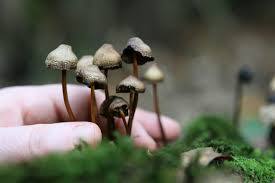Are you looking to learn the best ways to plant psilocybin fungi? It’s true; you’re certainly not the only one. There are more people keen to do This could be explained using our 7 Easy Steps To Growing magic mushrooms;
- A more significant curiosity about the advantages of magical mushrooms
- Potential savings in cost
- The abundance of growing guides and magical kits for growing mushrooms
- The shifting legal landscape: As time passes it is becoming more U.S. cities are deciding to end the criminalization of magic mushrooms
If you’ve decided to cultivate magic mushrooms, here are the steps to help you grow them with success. Growing psilocybin fungi in your own home are incredibly economical and an enjoyable project to take on. However, legal risks could be involved with doing it, based on the place you live.
How To Grow Magic Mushrooms At Home using 7 Easy Steps To Growing magic mushrooms
We’ll now look at all the7 Easy Steps To Growing magic mushrooms This guide is for beginners or those who’ve never grown mushrooms before.
You should expect the entire process to take between 4-6 weeks. By that time, you’ll be able to make a batch to be consumed.
Choose Your Mushroom
The first step is to choose the type of mushroom you’d like to cultivate. There are about 180 species of natural mushrooms; however, only a few will be available for purchase for magic mushroom seeds which are the cells that reproduce and can develop into mushrooms. You can also purchase different species in the natural world.
Psilocybe azurescens
Psilocybe cubensis Brazil
Psilocybe cubensis Cambodian
Psilocybe cubensis Ecuador
African Transkei Magic Mushroom
Psilocybe mexicana
The species and strains mentioned above could differ significantly in strength. So, choose one that appeals to you and alter your dosage accordingly.
Ingredients And Equipment
There are a variety of ingredients and equipment to cultivate the psilocybin mushroom at home. However, the benefit is that you only have to purchase the set-up once. It will be cheaper than purchasing an expensive mushroom grow kit or buying shrooms per gram at a local street-side vendor or dark net vendor.
Ingredients:
- Spore syringe, 10-12cc. It will hold the spores of your psilocybin mushrooms. The purpose of it is to “sow” the spores into the substrate. (Here, it is essential not to forget some growers have complained of problems with spore syringes, for example, contamination, being the wrong strain, or even having nothing more than water. Make sure that you purchase your spore syringe through an authentic source.)
- Organic Brown Rice Flour
- Vermiculite, medium/fine
- Drinking water
Equipment:
- 12 shoulderless half-pints with lids
- Small nail and Hammer
- Measuring cup
- Mixing bowl
- Strainer
- Tin foil with a heavy-duty coating
- Large cookware with a lid that is tight to allow steaming
- Small towels
- Micropore tape
- Plastic storage box 50-115L
- Drill using the drill bit of a quarter-inch
- Perlite
- Mist spray bottle
Hygiene supplies:
- Alcohol rubs
- To light a torch made of Propane or Butane.
- Surface disinfectant
- Air sanitizer
- Gloves made of sterilized latex, surgical masks with still air or glove box (all available)

Step 1: Preparation:
- With the hammer or nail and hammer, both of which you’ve cleaned with alcohol, create four holes in the lids on the bottles equally spaced around their circumference.
- In each jar, mix two-thirds of one cup of vermiculite with one-quarter of one cup of water into your mixing bowl. The excess water should be drained using an unclean strainer. Add one-quarter of a tablespoon of rice for each half-pint jar into the bowl, mixing it with the moist vermiculite.
- Fill the jars with water, leaving a half-inch space between the rims. Be cautious not to pack these too much. After that, sterilize the top half-inch by using rubbing alcohol. Then, cover your jars with an even layer of vermiculite (this will protect the surface from contamination).
- Screw the lids securely. Cover the jars using the foil. Be sure to keep your foil edges on both sides of the containers. This will stop condensation and water from passing through the cracks. After that, you’ll need to place the towel in your larger cooking pot, put the jars over it and make sure they aren’t touching the bottom of the cooking pot. Then, you’ll add water from the tap until it is halfway across the sides of the containers; proceed to bring water up to a low simmer, ensuring that the jars remain standing up. After that, put the tightly-fitting lid onto the pot and allow the pot to steam for about 75-90 minutes.
- Once you’ve finished steaming, place the foil-covered jars inside the pot and let it cool for a few hours or overnight. They must be cool before proceeding with the following steps.
Step 2: Inoculation:
- Utilize a lighter to heat the needle of your syringe and continue to do this until it turns red hot. Let the needle cool, and then clean it with alcohol, but be cautious not to get it in your fingers. Then, you can pull back the plunger slightly before shaking the syringe (this allows for a uniform distribution of the spores from the psilocybin fungus). If you must assemble the syringe before you use it, you must prevent contamination. It is possible to do this by using sterilized gloves and surgical masks and (ideally) placing the syringe within a clean, dry air box or glove box.
- Take the foil off of the top of the jars. Insert the syringe into some openings to the extent it will go. With the needle positioned on the side of the bottle, you should inject around one-quarter of a cc of the solution for spores. Repeat the process for the remaining three holes by wiping the needle with alcohol between every infusion. Then cover the holes using micropore tape and place the jar aside while leaving the foil exposed. Repeat the inoculation process with the rest of the jars sterilizing the needle with alcohol and a lighter between each one.
Step 3: Colonization:
- The jars that have been inoculated should be kept clear, far from direct sunlight, and at room temperature. Mycelium that appears white and fluffy is expected to begin appearing between 7 and 14 days, after which it spreads out from the inoculation sites. (At this moment, you should look for any signs of contamination like strange colors or smells. If you notice any of these indicators, you should eliminate the jars as soon as possible. If you’re not sure, take a step of caution since some contaminants could be harmful when consumed.)
- After three to four weeks, you’ll be able to colonize jars. Allow them to rest for seven days so that mycelium will strengthen its grip on the surface.
Step 4: Preparing The Grow Chamber:
- Use the plastic storage container and drill holes of a quarter-inch diameter of approximately 2 inches across the sides, base, and lid. To ensure that the container does not crack during this procedure, you need to drill the holes from the inside out and into a block of wood. Then, you can place the box over four sturdy objects, and arrange them in the corners, so that air flows beneath. It may be beneficial to cover the underside of the box and shield the box from moisture leakage.
- Put the perlite in a strainer, then run it through the cold faucet to soak. Then let it run off to a point where it is no longer dripping. Then spread the perlite across the top of your growing chamber. Repeat the process until you’ve got an even layer of perlite approximately 4 inches thick.
Step 5: Fruiting:
- Remove the jars from the top and remove the vermiculite layer that is dry in each, making sure not to harm the substrates (or cakes) when doing so. Then, lift each jar and tap them on a clean surface, releasing the cakes into their original state.
- Rinse the cakes one at a given time under the cold tap. This will loosen any vermiculite. The cookware should be filled with tepid water and put in the cakes. Place them in the water just below the top of the pot using a pot or a similar item. Then, you can leave the pot at room temperature for at least 24 hours. This should allow enough time for cakes to rehydrate.
- Take the cakes out of the water, and then put them on a clean surface. Then, it would be best if you ensured that the mixing bowl was filled with dry vermiculite. Then, make the cakes into a ball in the mixing bowl, each one at a time, so they’re entirely covered in vermiculite.
- Cut a tin foil square for each cake. It should be large enough to allow them to rest on so they do not touch the perlite inside the chamber for growing. Place the foil squares equally in the section, then place the cake on top before misting the room with the spray bottle. Ensure you fan your chamber with the lid before closing the lid.
- It is recommended to mist the chamber at least every day for four hours to keep the humidity. Do not soak the cakes in water. However, it would help if you did this. Also, ensure to fan the chamber by closing the lid at least six times per day, particularly after misting, since this helps improve airflow. The mycelium should be exposed to natural light during the day enough to allow the mushrooms to develop.
Step 6: Harvesting:
- Watch For Fruits. These mushrooms (fruits) will first appear in tiny white lumps and develop to form “pins.” After 5-12 days, the fungi are then ready to pick.
- When you’re ready, slice the mushrooms close to the cakes. Please don’t wait until they are at the end of their growth as the psilocybin mushroom’s potency decreases as they grow older.

